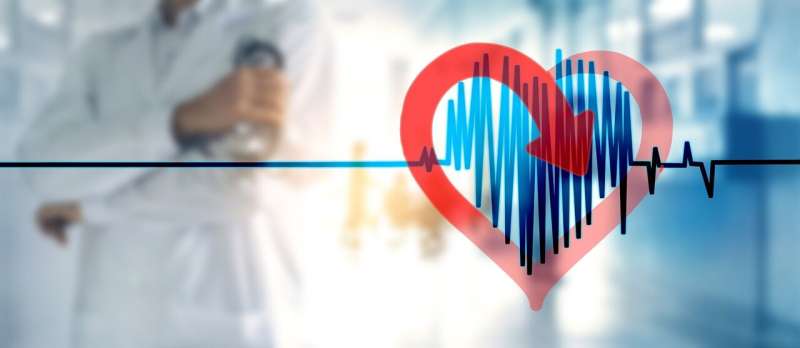This article has been reviewed according to Science X's editorial process and policies. Editors have highlighted the following attributes while ensuring the content's credibility:
fact-checked
peer-reviewed publication
trusted source
proofread
Comparing cardiac monitoring methods to detect atrial fibrillation after stroke

Insertable cardiac monitors detected a higher incidence of atrial fibrillation in patients with prior ischemic stroke over a three-year period than standard medical monitoring methods, according to results published in JAMA Neurology, based on long-term findings from the Northwestern Medicine-led STROKE AF clinical trial.
The findings suggest that current medical monitoring methods do not reliably and consistently detect atrial fibrillation in patients recovering from stroke, who may also need additional monitoring to prevent recurrent stroke, said Richard Bernstein, MD, Ph.D., professor in the Ken and Ruth Davee Department of Neurology Division of Stroke and Vascular Neurology and lead author of the study.
Atrial fibrillation, an irregular and rapid heartbeat, increases the risk of ischemic stroke in patients with other stroke risk factors by fivefold, according to the Centers for Disease Control and Prevention. Stroke-preventing therapies such as anticoagulation drugs, are the current standard of care for long-term treatment. However, some patients experience a second stroke from a different cause than their first stroke, underscoring the need for additional preventive care.
"The cause of the first stroke is not necessarily a perfect guide to how to prevent the next stroke. So that's why we try to address all the risks for future stroke after someone's had a stroke and try to minimize their total risk regardless of what the cause of the first event was," Bernstein said.
A previous trial led by Bernstein, the STROKE AF study, found that 12% of patients who experienced ischemic stroke due to cardiovascular disease, specifically large-artery atherosclerotic disease (LAD) or small-vessel occlusive disease (SVD), developed atrial fibrillation over the course of one year when monitored with an insertable cardiac monitoring device, compared to 1.8% of patients who received standard medical monitoring.
The current study aimed to compare rates of atrial fibrillation in patients who received an insertable cardiac monitor compared to patients who received standard monitoring over a three-year period.
For the clinical trial, more than 300 patients from 33 clinical sites across the U.S were randomized to receive a cardiac monitor or standard medical monitoring. Patients were 60 years or older, or between 50 to 59 years with at least one additional stroke risk factor, and who had ischemic stroke attributed to LAD or SVD within 10 days before receiving a cardiac monitor.
At the end of the three-year trial period, investigators found that the rate of atrial fibrillation was 22.7% in the cardiac monitor group and 2.4% in the control group.
The results suggest that insertable cardiac monitors should be considered for patients with prior ischemic stroke, however additional research is needed, according to Bernstein.
"I think we should consider monitoring in the majority of stroke patients, but that doesn't mean we should do it, and we have to think long and hard before we sort of mindlessly act to treat these patients because there is the potential for harm and the benefit is yet to be proven," Bernstein said.
"I would say that if you have a patient where you would be inclined to treat their atrial fibrillation, if you found it, then the only way to look and be sure is to implant a monitor."
More information: Richard A. Bernstein et al, Atrial Fibrillation In Patients With Stroke Attributed to Large- or Small-Vessel Disease, JAMA Neurology (2023). DOI: 10.1001/jamaneurol.2023.3931



















